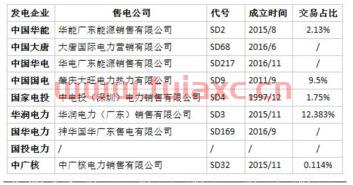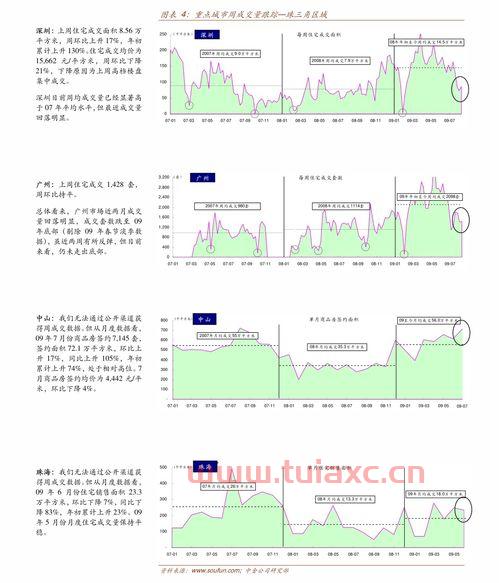energyreports会议论文能被sci收录吗
不能。SCI检索一般检索期刊,energyreports会议论文集不属于SCI的检索范围,energyreports会议论文 *** 被ISTP检索。

energyreports是几区sci
将所有SCI期刊按影响因子排序,前5%是一区,前20%是二区,前50%是三区,剩下的是四区。
投稿了CPESE能源系统类的国际会议看到他们前面六届都是EnergyReports
一般还是可以放心的,小概率也会出现意外,但是这个会议还是靠谱的∞
renewableenergy期刊水吗
renewableenergy期刊不水,在学术研究方面还是挺有影响力的。
作为Nature旗下的开源期刊,刚满十周岁的ScientificReports因其发文量大(年刊文2万上下)、投稿命中率高(46、3%)、影响因子友好(在3-5分徘徊)而位列“四大神刊”。
“不求创新,只求正确”的策略为SR吸引了不少“灌水文”,一度被部分高校院所踢出奖励名单;加上有“不靠谱论文”撤稿和编委集体辞职的新闻拖后腿,口碑一度被拉垮。
关于拯救地球环境、和有关自然灾害的英文文章、
Counting carbon
Jay Gregg
Creating national emissions inventories seemed easy: I would simply take the energy consumption of a country, break it down by fuel type, multiply by a carbon-emissions factor and sum the figures. This was years ago, when I first started to determine the seasonal cycles of fossil fuel carbon dioxide (CO2) emissions in an effort to improve scientific understanding of the global carbon cycle. It was a collaborative effort with the Carbon Dioxide Information Analysis Center (CDIAC) at Oak Ridge National Laboratory in the United States, one of the main data warehouses for emissions inventories.
However, after spending a jet-lagged afternoon in Indonesia’s ministry of petroleum thumbing through coffee-stained reports, searching the shelves for missing pages and volumes and trying to make sense of data that looked like they were created by a random number generator, I realised that I had been a bit naïve.
Data from Indonesia has improved considerably since then, though for many developing nations the figures are still spotty at best. Even for more developed countries, data quality varies substantially. While the United Nations Framework Convention on Climate Change (UNFCCC) has created guidelines for reporting emissions inventories, many countries lack the resources to provide reliable and transparent data in a timely manner. Recently, there has been a concerted scientific effort (e.g. here, here and here)to better quantify the level of uncertainty in emissions inventories. And politically, a lot of attention is currently focused on the uncertainty in China’s data – which often lacks transparency and reliability.
For scientists, uncertainty is a normal part of our work and emissions inventories are no exception. It is clear that the level of uncertainty is currently too high for political and economic purposes, and some improvements should be made. However, we have neither the time to wait, nor the resources to produce perfect inventories, so this should not be an excuse to further stall talks. We should set a goal for an acceptable and realistic level of uncertainty in emissions inventories and create an international action plan to achieve it.
Emissions inventories are verified by a panel of international experts at the UNFCCC, but it is often difficult to know how accurate the reported emissions are when national statistics lack transparency. Scientists could quickly recognise if the global total was off the mark, but it would not be easy to determine which countries had incorrectly reported their numbers. Scientists do their best to quantify the uncertainty by looking at the revisions countries have made to their reports and inconsistencies in the underlying statistics.
The majority of carbon-dioxide emissions come from fossil-fuel combustion. However, energy statistics are notoriously tricky, because fossil fuels are dug out of the ground, transported, processed and consumed in myriad ways. There are many accounting challenges: private consumers stockpile fuels or obtain them from black markets; military fuel use is usually not reported; some data are withheld because of non-disclosure agreements with private companies; national agencies use different units, statistical techniques and data-collection methods. Even after countries publish energy reports, they still make data revisions, sometimes even decades later. Because of the enormous task in obtaining, processing and making sense of the underlying data, building an inventory can be challenging, time-consuming and expensive. Nevertheless, scientists try to create something as close to reality as possible.
Unfortunately, for most countries the scientific uncertainty in their emissions inventories is roughly as large as their proposed reductions under the Kyoto Protocol (this also speaks to the fact that the reduction targets are most likely too modest to keep the globe from warming two degrees Celsius above pre-industrial levels). Even for the United States, which keeps meticulous data, the margin of error for annual fossil fuel carbon-dioxide emissions calculations is 3% to 5%. For China, we estimated the uncertainty to be about 15% to 20%. For some of the less developed countries, it is likely much higher.
The majority of the world’s carbon emissions come from just a handful of countries, so improving estimates from a few key players can reduce the overall uncertainty in global emissions. For example, the total industrial carbon-dioxide emissions from Africa are roughly equal to the uncertainty in the industrial carbon-dioxide emissions from China, since China's emissions are more than five times Africa's emissions. But this is changing. In 2006, total emissions from developing countries surpassed those from developed countries. In the last decade, as developing countries – China in particular – have made a larger contribution to global emissions, the uncertainty surrounding global emissions figures has increased; in other words, we were more certain about anthropogenic carbon-dioxide emissions 10 years ago than we are today.
There is a clear need for improvement. Countries investing in low-carbon technologies or spending political capital to implement difficult climate-change mitigation and adaptation initiatives would benefit from much more accurate and timely information in order to monitor progress, report carbon reductions to the secretariat, and realise a return on investment in sustainable development projects. Also, with a 6% (and growing) uncertainty in annual global emissions, determining economically efficient future reduction strategies is challenging. Therefore, independent international efforts should be made to help countries – particularly in the developing world – produce more accurate inventories.
In an ideal world, all emissions accounting would be Measurable, Reportable, and Verifiable (MRV) with perfect precision. The concept of MRV seeks to create a system where all projects are quantified and verified as true emissions reductions. MRV is typically discussed and applied on *** all scales, namely in Clean Development Mechani *** (CDM) and Joint Implementation (JI) projects: two market-based mechani *** s designed to help countries meet their emissions-reduction targets under the Kyoto Protocol.
In the larger picture, a country determines its number of tradeable emission allowances with reference to its Kyoto Protocol reduction targets, which countries pledge based on their self-reported emissions inventories. Thus, the price of carbon dioxide – and the credibility of carbon markets – is directly linked to what is reported in national emissions inventories. In order to have a vibrant and fair carbon market, on which to build solid investment strategies and reduce global carbon emissions, parties need to trust national emission inventories and reduction targets.
But there will always be scientific uncertainty surrounding carbon emissions. While we should work to improve the reliability and transparency of national emissions, no amount of inspections or auditing will remove all uncertainty. The current emphasis on verification in UN climate negotiations is unlikely to improve inventories very much, not only because it creates an atmosphere of mistrust and finger-pointing but also because verification cannot reveal much if data were not collected properly from the start. Intervention should occur at the beginning of the process – to assist countries in creating inventories – not at the end after the inventories have been submitted.
Despite the scientific imprecision, the carbon market functions because investors agree to accept the estimates at face value and understand the uncertainty as an acceptable economic risk. It does not make economic sense to wait until we have perfect inventories before forging agreements addressing climate impacts – which will likely become more severe the longer we do not act. Moreover, it is not morally justifiable to spend this amount of money on monitoring emissions when the funds could be used to reduce emissions, adapt to an already changing climate, finance sustainable-development projects or simply improve living conditions in the developing world.
Therefore, instead of perfection, let’s set and agree on a reasonable goal – uncertainties of less than 10% for the top 20 countries (representing three-quarters of global emissions) and less than 50% for the rest of the world – and move forward. This goal could be achieved if countries had a more systematic, transparent and standardised method for reporting energy consumption (and uncertainty, for that matter) and if international assistance in data collection was more readily available. Realistically, that is the best we are likely to attain in the near future and it would benefit the creation of meaningful reduction targets.
Jay Gregg is scientist for integrated modeling of energy systems, costs and climate policies at Risø DTU National Laboratory for Sustainable Energy.
华媒控股股价为什么这么低呢、华媒控股股价为什么这么低
属于深A ,涉及阿里巴巴概念,互联网平台,融资融券,文化传媒概念股。所属行业是传媒。
免责声明
本站所有信息均来自互联网搜集
1.与产品相关信息的真实性准确性均由发布单位及个人负责,
2.拒绝任何人以任何形式在本站发表与中华人民共和国法律相抵触的言论
3.请大家仔细辨认!并不代表本站观点,本站对此不承担任何相关法律责任!
4.如果发现本网站有任何文章侵犯你的权益,请立刻联系本站站长[ *** :775191930],通知给予删除





